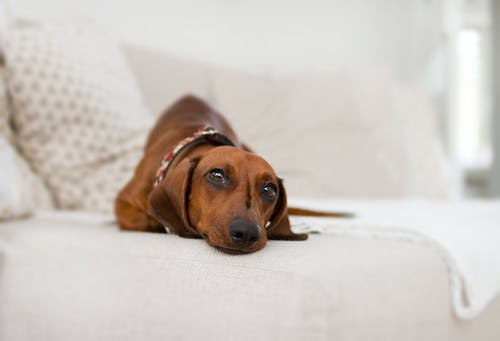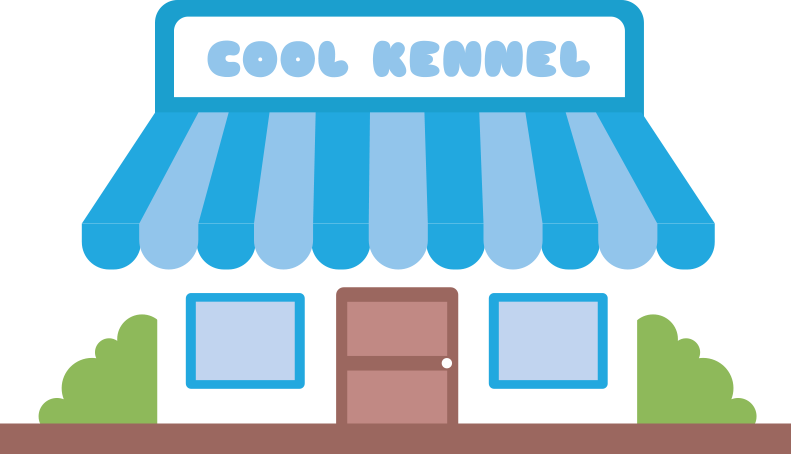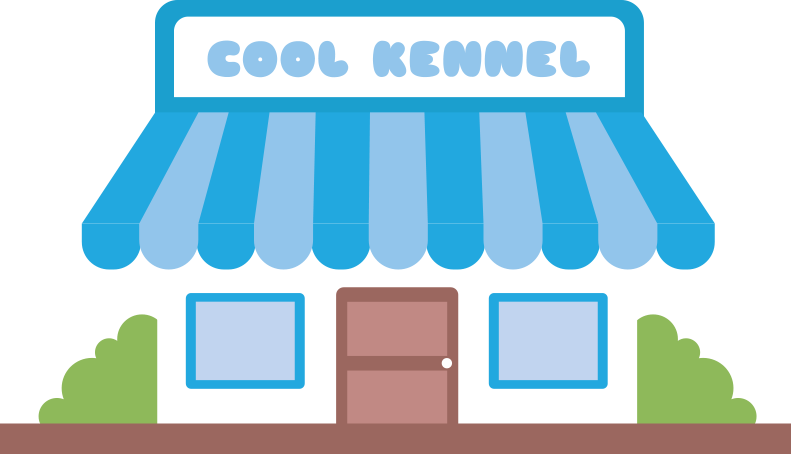Separation anxiety: Leaving your dog at home after lockdown
Back
The past few months have been testing for all of us, but as lockdown measures are starting to ease and people are being returned to work, what does that mean for our pets. With many people being unable to work and others working from home for much of 2020, it means that our dogs have gotten used to us being at home with them all of the time. It is also worth highlighting that separation anxiety may also be a concern if you are leaving your dog in a kennel or in home boarding, so read on for The Good Kennel Guide’s best tips for spotting, preventing and treating separation anxiety.
What is separation anxiety and how can I spot it?
Often referred to as separation anxiety, or separation related behaviour, it usually occurs when a dog is separated from their owner leading them feeling distressed. This can be demonstrated in different ways but might include destructive behaviour, going to the toilet in the home and howling or barking but could also include whining or pacing. Other less common signs of separation anxiety include trembling, excessive salivation (or excessive drinking), self-mutilation, repetitive behaviour and vomiting. Your dog may also follow you around the house when you return or might show signs of stress as you are preparing to leave the house.
It might not be possible to be aware of some of the more subtle behaviours if you are not at home, but research suggests that 8 out of 10 dogs find it hard to cope when left along, with only half demonstrating more obvious signs of separation anxiety. Most behaviours start soon after the owner has left the house (normally within 30 minutes) but often after just a few minutes. We recommend occasionally filming your pet whilst you are out, even though they may not show outward signs of distress. Dogs feel most vulnerable when they are on their own and can develop some very specific fears, especially if they are a more sensitive or nervous natured dog.
What are the causes of separation anxiety?
The causes of separation anxiety will vary from dog to dog but might be down to:
The dog has never been left home alone regularly or has never been separated from a particular person.
The dog is scared of something inside or outside of the house (this could be a one off event like a thunderstorm or a regular event such as the post coming through the letterbox).
They have lost someone they care about- dogs form strong bonds with other dogs, cats, and ofcourse people and this might cause them stress and anxiety.
Boredom- this more typically affects young, energetic dogs who will find their own entertainment when left to their own devices.
Separation anxiety can sometimes affect rescue dogs or dogs who have been rehomed a number of times, this can be caused by a number of factors but includes adapting to life in a new home.
How can I prevent my dog from suffering with separation anxiety?
So, with so many people returning to work it is important to start planning and preparing your dog and teach them that being left at home is fun. Every dog is different and bear in mind that each dog will progress at their own pace. Be responsive to how they respond to the different steps below and adjust your response accordingly- ensuring that your training never becomes distressing for your dog. As with any training experience it is important to make it fun and never stressful, provide lots of treats, praise and toys along the way, and gradually increase the time that your dog is left alone. If your dog reacts or moves, don’t reward them but never punish them, if this happens we suggest slowing down and repeating previous steps again until they become more comfortable.
Step 1: How can I prevent my dog from suffering separation anxiety?
Encourage your dog to sit somewhere they are normally very comfortable (such as their bed) and tell them to stay there for a short time. If they remain quiet reward them.
Step 2: How can I prevent my dog from suffering separation anxiety?
Repeat step 1 but move away from your dog. Return to them and reward them.
Step 3: How can I prevent my dog from suffering separation anxiety?
Repeat step 2 but gradually moving further away and for longer periods of time. How long and how quickly you do this will depend upon your dog. Eventually this should lead to you leaving the room entirely.
Step 4: How can I prevent my dog from suffering separation anxiety?
Repeat step 3 but actually going outside and start to vary the length of time that you are out.
Step 5: How can I prevent my dog from suffering separation anxiety?
Once your dog has completed all 4 steps and is happy to be left alone for up to an hour then leaving them for longer periods of time should not be a problem.
You may also encourage your dog to not be too reliant on your attention whilst you are at home so that they are better able to cope when you are not there.
How can I treat separation anxiety in my dog?
Our top tips and recommendations for how you might help your dog to deal with separation anxiety- whether they already demonstrate behaviours or signs of a problem, or if you just want to help them feel better when left alone. The options might also help you to understand if there are other problems contributing to the behaviours you have observed, such as needing mental stimulation or noises that unsettle them.
1- Don’t react badly or punish your dog
Punishing your dog or reacting badly when you return will only serve to reinforce their feelings of anxiety and the behaviour is likely to become worse. If you punish them or show them their bad behaviour (if it is destructive) it is likely to be misunderstood, even though they might appear to look “guilty” this is a misinterpretation of their feelings of anxiety and stress that we place on them as humans. A dog that looks guilty to a human is more responding to their own owners disappointment, upset and anger and is demonstrating appeasing behaviour to placate that. Do not physically punish or shout at your dog, let them outside before you clean up and do not turn their behaviour into a drama to repeat each time you leave them.
2- Get them ready to relax before you leave them alone
Plan ahead and think about taking them for a walk before you leave them. This will give them an opportunity to unwind on a walk and go to the toilet, give them a small meal before you return and leave enough time to get back and for them to settle into their bed before you leave, ready for a nice sleep and some relaxation time. When you do leave, don’t make a big act of saying goodbye and make a fuss of them, this might encourage them to stress and worry. If you are normal, relaxed and care-free when you leave they will be too. You could also consider making the preparations for leaving the house (a practice)- gather your keys, phone etc, but don’t actually leave the house. This will get them used to seeing you getting ready to leave whilst not building up stress and anxiety that will only spiral when you are not there.
3- Do what you can to avoid external disturbances
Consider leaving them in a quieter room, leaving the radio on or pulling the curtains so they do not feel tempted to bark at passers by. Managing these small disturbances where you can will help to ensure that your dog can relax without responding to noises outside the home.
4- Give them mental stimulation
Buy them a mentally stimulating toy that they only have when you are not there (i.e. a “special” toy). Ensure that the toy is stored when you return and remove any uneaten treats to avoid overfeeding or food spoiling.
 |
KONG- stuffable toy Medium Pack of 2 £16.49 |
 |
Natural Rubber Dumbbell toy £19.99 |
 |
KONG-Wobbler £12.99 |
 |
PetSafe Busy Buddy Bristle Bone Dog Chew, small, £6.99 |
 |
Idepet Dog Treat Ball set of 3 £9.99 |
 |
KONG Genius Toy, Large £13.49 |
5- Send them to doggy day care or hire a dog walker
If you are leaving your dog alone for longer than 4 hours we recommend that you should leave your dog with a home boarder, local kennel that offers day care, dog day care centre, dog walker or dog sitter. This means that your dog will have company when you are away or they can be taken for walks whilst you are not there and will ease their stress. The Good Kennel Guide lists only licensed kennels, home boarders and dog day care centres so can help you to find the perfect care for your dog. Dog Walking will be indicated under each listing as an additional service when making a booking if it is available.
6- Seek help from professionals
If the separation anxiety persists we recommend initially consulting your vet, who will know you and your dog better than other professionals. Your vet will be able to talk you through your options and will be able to recommend a good clinical animal behaviourist. This will mean that you are able to get a better understanding of any underlying problems and together come up with a plan that will work for both you and your dog. You may also wish to consult the Association of Pet Behaviour Counsellors or the Animal Behaviour and Training Council. If your dog has recently been rehomed you should also receive some support from the rehoming centre you rehomed your pet from.
See also:
-
COVID-19: How our dogs saved us during lockdown
-
COVID-19: Should I get a new dog during lockdown
-
COVID-19: Introducing your dog to facemasks
Identifying, preventing and treating separation anxiety in dogs
Similar Articles

Good Dogs. Good Kennels.
The Good Kennel Guide takes the stress out of dog boarding by only listing licensed kennels and boarders who meet the standards required by the Animal Licensing (Licensing of Activities Involving Animals) Regulations 2018.
All kennels and boarders that hold a valid licence have a free listing on the website which kennel owners and boarders can “claim” by creating a free account - this allows them to personalise some of their listing and interact with dog owners.

An easy-to-use system for dog owners
The Good Kennel Guide takes the stress out of dog boarding by only listing licensed kennels and boarders who meet the standards required by the Animal Boarding Act 1963.
Dog owners can sign up and create a profile here - it's really simple, and only takes a few moments.
Add your dog to your private profile to submit enquiries to kennel owners and boarders, send messages, and leave reviews following boarding.
Kennel Locations
England
Airports

